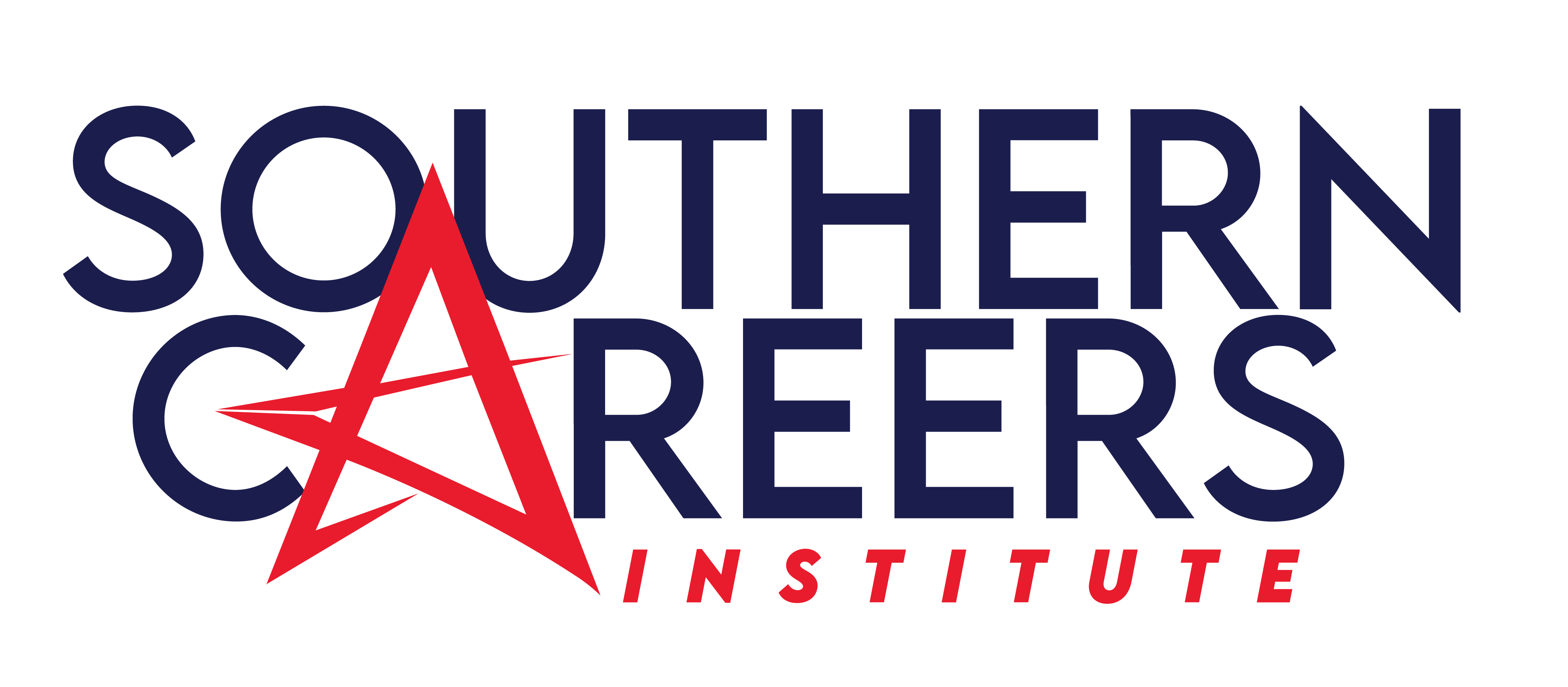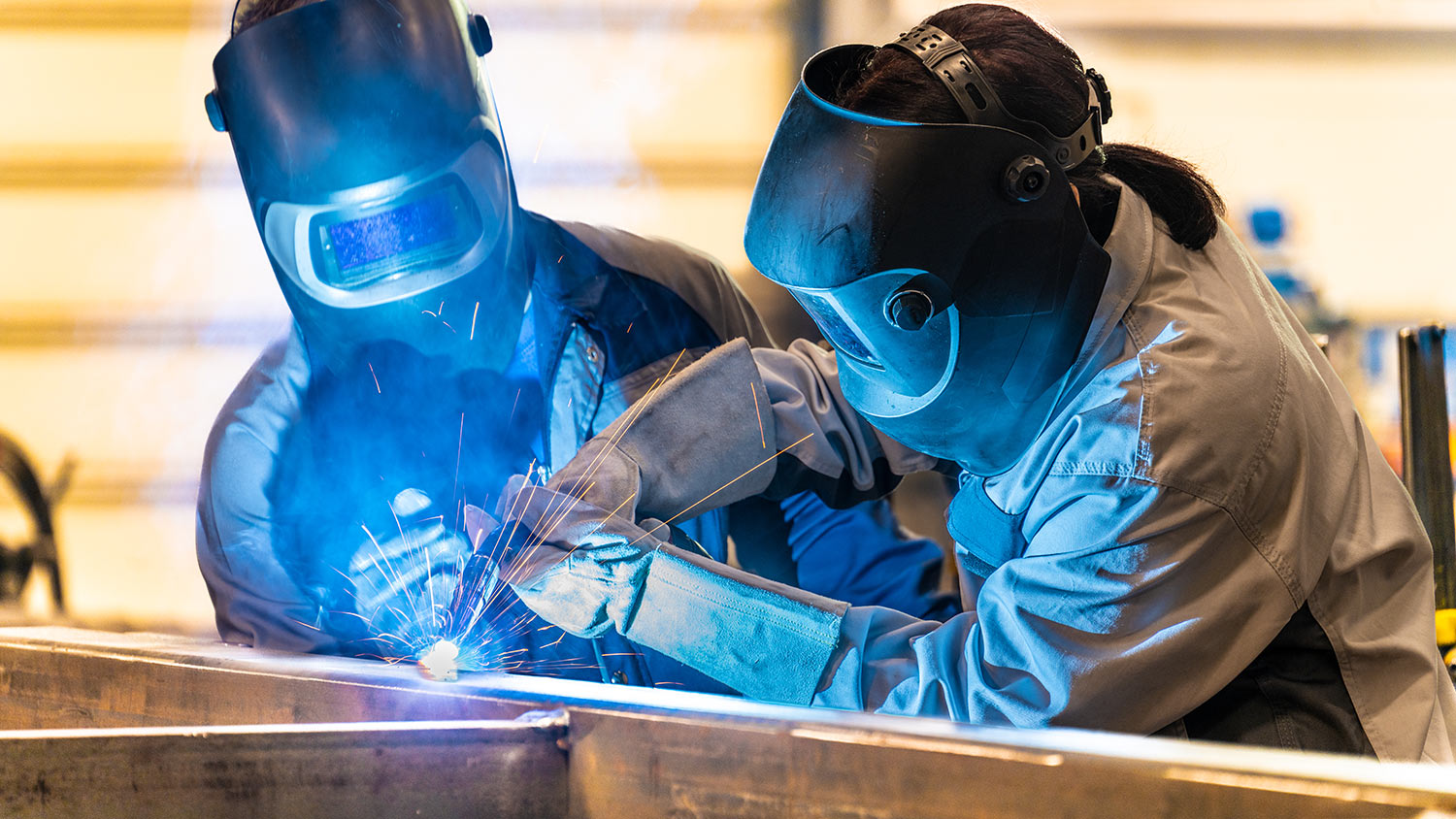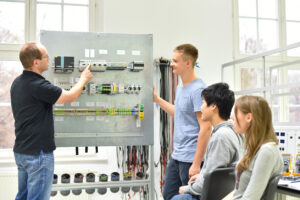Understanding the Distinction: AI vs. Automation
At first glance, it’s easy to confuse artificial intelligence (AI) with automation. After all, both are making their presence felt in the welding industry. However, there’s a fundamental difference between the two, and grasping this distinction is crucial.
AI (Artificial Intelligence): AI involves machines making decisions based on experiential learning and the information they receive. It’s about imbuing robots with the ability to think somewhat like humans, processing data, and making choices accordingly.
Automation: Automation, on the other hand, revolves around instructing robots to follow a predefined set of rules. Here, the robot executes tasks according to a predetermined script. It’s excellent for streamlining and accelerating welding processes, but it doesn’t involve independent decision-making by the machine.
The Advantages of Automation
Automation is rapidly becoming the go-to solution in welding, and it’s not hard to see why. Here are some of the compelling benefits it brings to the table:
Consistent and Superior Product Quality: Automated welding systems are exceptionally precise, ensuring consistent weld quality. They can replicate the same weld over and over with minimal variance.
Increased Productivity: Robotic welders work tirelessly, 24/7, without breaks or fatigue. This boosts overall productivity and reduces project completion times.
Decreased Workload: Automated systems take on heavy lifting, both figuratively and literally. They handle the repetitive and physically demanding aspects of welding, reducing the workload on human welders.
Employee Retention: Automation complements human workers rather than replacing them. It can make welding jobs less physically taxing and more appealing, potentially improving employee retention rates.
Decreased Operating Costs: While the initial investment in automated welding equipment can be substantial, the long-term savings in labor costs and increased efficiency often outweigh these expenses.
Enhanced Work Safety: Robotic welders can work in hazardous environments and conditions without risking human safety. This enhances workplace safety and reduces the likelihood of accidents.
Lower Environmental Footprint: Efficiency gains from automation can translate into reduced energy consumption and material waste, contributing to a greener, more sustainable welding industry.
The Role of AI: A Welder’s Ally, Not Replacement
So, will AI take over the welding industry entirely, making human welders obsolete? In short, no. While automation is becoming increasingly prevalent and capable in welding, there will always be a need for skilled human welders, especially for complex and intricate projects that require judgment, creativity, and adaptability. AI and automation are tools that empower human welders to work smarter and more efficiently. They handle repetitive, physically taxing, and potentially dangerous tasks, allowing human welders to focus on critical decision-making, problem-solving, and overseeing the welding process.
The welding industry is continually evolving. New technologies and techniques are emerging, aimed at making the welder’s job easier and more efficient. So, keep an eye out for exciting advancements on the horizon. Despite the remarkable advancements in automation and AI, the role of human welders remains irreplaceable, especially in tasks that demand creativity, problem-solving, and adaptability. Complex projects, custom fabrications, and quality control rely on the expertise of skilled welders.
AI and automation serve as valuable tools that empower welders to work more efficiently and safely. They handle physically demanding and repetitive tasks, reducing the risk of welder fatigue and improving overall productivity. Moreover, they contribute to maintaining consistent weld quality, a critical factor in industries such as aerospace and nuclear power
The Continuing Evolution of Welding
The history of welding is a tale of innovation. From the earliest days of forging metals by hand to the modern era of automated systems, welding has seen a remarkable transformation. Today, automation and artificial intelligence are ushering in a new chapter in this ever-evolving industry. Welding, at its core, is the process of joining materials, typically metals, together. It plays a crucial role in various industries, from construction and manufacturing to aerospace and automotive. Over the years, welding has become more sophisticated, precise, and efficient, thanks to technological advancements.
Today, the welding industry stands on the cusp of a new era, driven by artificial intelligence and advanced automation. Robots equipped with AI systems are capable of making decisions based on data analysis and experiential learning. This means they can adapt to changing conditions and ensure precise welds, even in complex scenarios. Automation has become a common sight in welding workshops and manufacturing plants. Robotic welding arms, guided by computer programs, execute welds with incredible speed and accuracy. Human welders oversee these processes, ensuring everything runs smoothly.
The Complex and Custom: Where the Welder Shines
While automation and AI excel in routine and repetitive tasks, they may face limitations in complex, custom, or one-of-a-kind welding projects. Human welders bring creativity, problem-solving skills, and adaptability to these scenarios. They can make critical decisions on the spot, adjusting techniques to achieve the desired outcome. Custom fabrications, artistry in welding, and specialized applications often rely on the craftsmanship of skilled welders. Welding artists, for example, create intricate sculptures and architectural pieces that blend form and function—a task that goes beyond the capabilities of automation
The Ongoing Journey: Welding’s Future
The future of welding is undoubtedly exciting, marked by the continuous evolution of technology and its integration into the industry. While automation and artificial intelligence are transforming the way welding tasks are performed, they are not replacing the welder but enhancing their capabilities and efficiency.
Automation and AI bring the promise of unprecedented efficiency and precision to welding operations. Robots can work around the clock without fatigue, consistently delivering high-quality welds. They excel in repetitive tasks, such as those found in manufacturing and construction, where precision and speed are paramount. Moreover, AI-powered welding systems can adapt to varying conditions in real-time. They can analyze data from sensors and adjust welding parameters to ensure optimal results, even in challenging environments. This level of adaptability enhances the versatility of welding processes.
In the era of automation, the welder’s role is shifting from a manual laborer to a skilled technician who collaborates with machines. Welders are becoming operators of advanced robotic systems, overseeing processes, programming robots, and ensuring the quality of welds. Welding education and training programs are adapting to this changing landscape. They are incorporating modules on robotics, automation, and artificial intelligence to prepare the next generation of welders for the challenges and opportunities of the modern welding industry.
A Symbiotic Future: Humans and Machines
The welding industry’s future is not a battle between humans and machines but a collaboration. Automation and AI are tools that enhance the welder’s capabilities and productivity. They handle the heavy lifting, the repetitive tasks, and the precise operations, allowing welders to focus on what they do best—craftsmanship, problem-solving, and innovation. This symbiotic relationship between humans and machines is shaping a welding industry that leverages the strengths of both. It’s a future where welders can work alongside advanced robotics and AI systems, achieving levels of productivity and precision previously unattainable.
Embracing the Future
As the welding industry continues to evolve, it’s crucial for welders and businesses to stay at the forefront of technological advancements. At SCI, we recognize the transformative potential of AI and automation in welding. Our programs are designed to equip welders with the latest knowledge and skills needed to master these cutting-edge technologies. We believe in forging a future where human expertise and technology collaborate to achieve unprecedented results.
Join us in embracing the future of welding. Explore our programs and discover how you can harness the full potential of automation and AI in welding. Together, we’ll shape an industry that combines the best of human ingenuity with the power of technology, ensuring a brighter and more productive future for all.
Welding with SCI
At SCI, we understand the transformative potential of AI and automation in welding. We’re here to support welders, businesses, and industries as they navigate this evolving landscape. Our commitment to you is unwavering. We encourage welders to embrace these technological advancements, leveraging them to enhance your efficiency and productivity.
As we look to the future, we invite you to explore the possibilities with SCI. Our programs are designed not only to equip you with the latest welding technologies but also to provide the knowledge and skills needed to master them. Let’s forge forward together, creating a welding industry that blends the best of human expertise with the power of automation, ensuring a bright and productive future for all.
Join us on this journey of innovation and transformation in welding. Contact SCI today and discover how we can help you harness the full potential of welding in the age of automation. Together, we’ll shape the future of welding, one successful welding at a time.











